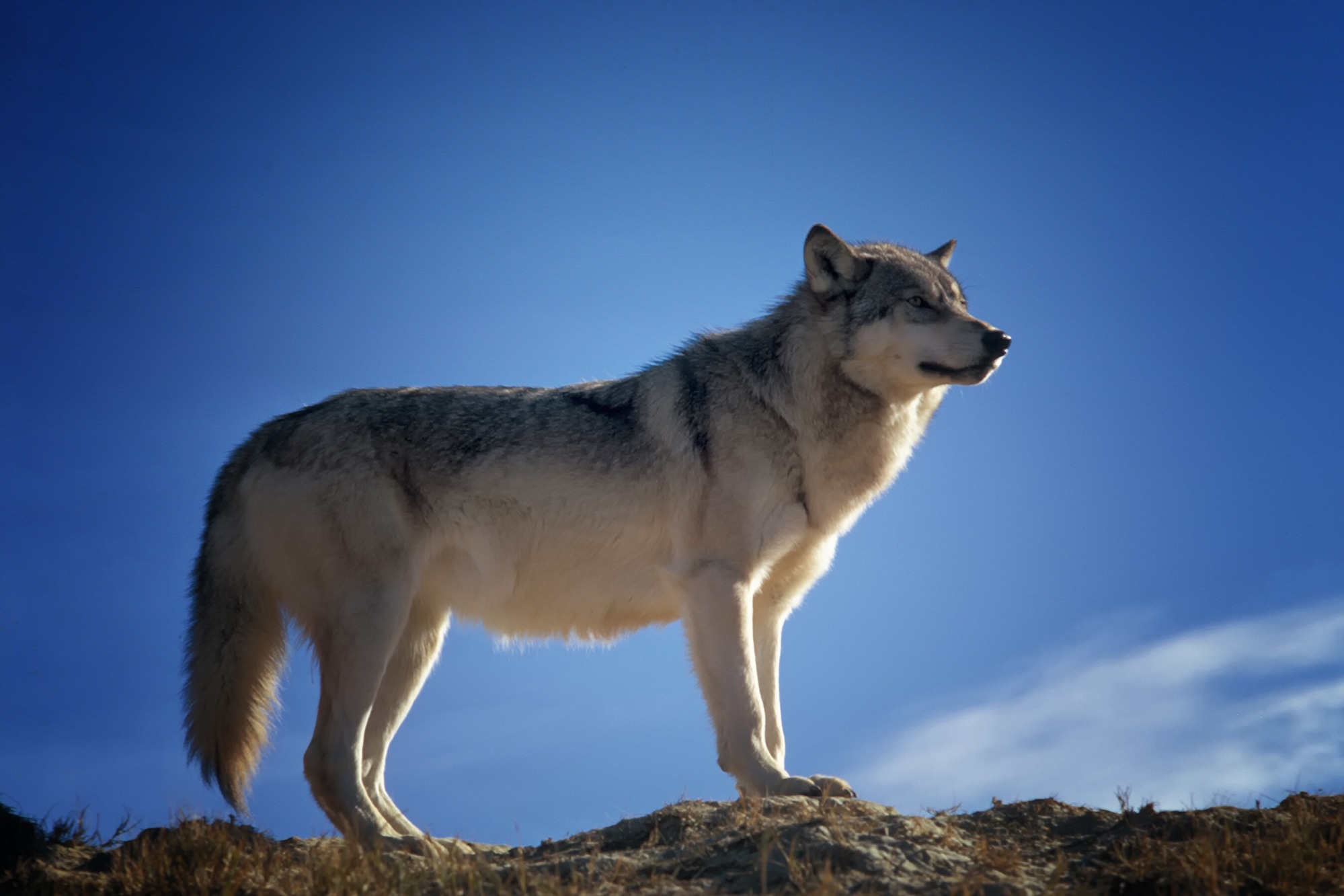Through colonization and into our modern era, perhaps no species has elicited more spilled ink and outsized rhetoric than the gray wolf. From the time hunters and trappers of the 1800s began selling their furs, to the current legal chess match of Endangered Species Act protections, wolf management has bounced around like a ping-pong ball in a lottery hopper. Nearly 30 years after wolves were reintroduced into the western landscape, in Yellowstone National Park and the Frank Church Wilderness, they continue to signify many things to many people. Individual perceptions of wolves tend to fall on a social spectrum, rather than through the lens of biology and ecosystem integrity.
When wolves were delisted as an endangered species in 2011 – not by their custodians at the U.S. Fish and Wildlife Service (USFWS), but through an act of Congress – it was viewed as a dramatic departure from the traditional, science-based setting of wildlife policy in our country. And although the Idaho Department of Fish and Game (IDFG) did inherit wolf management after that action, political overreach and special interest groups still seem to be guiding the decisions – not sound science. Under pressure from the legislative directive of Senate Bill 1211, this newly-minted Draft Wolf Management Plan is IDFG’s least biologically-defensible proposal yet.
With no credible scientific justification, the plan calls for the removal of 60% of Idaho’s current estimated population of roughly 1300 wolves over the next five years. IDFG’s plan to manage about 500 wolves statewide includes rolling back almost all regulations, and providing year-round seasons for any licensed hunter and/or trapper to kill an unlimited number of wolves. Federal animal control agents will even be given further authority to kill entire packs following livestock conflicts. With these blunt management tools, IDFG is likely to deteriorate public confidence in the agency’s ability to be apolitical, and perhaps tempt the USFWS to examine even more intently a gray wolf relisting petition, currently under review.

After federal delisting, IDFG told Idahoans they planned to manage wolves as prized big game animals – like black bears, mountain lions, moose and elk. Technically, that is still the case. However, in allowing for virtually unlimited take, their management direction essentially relegates wolves to a “varmint” status (think skunks, badgers and squirrels). IDFG has abandoned their responsibilities to all Idahoans to manage for all wildlife, and is making a grave miscalculation by violating basic conservation principles in the following ways:
- By killing so many wolves, we all lose out on the ecological benefits they bring to wild places. IDFG failed to write a plan that guarantees healthy populations of wolves and is ignoring the contributions of this important species on the landscape. Wolves improve the health of habitat for other animals like beavers, birds, fish, and amphibians. Wolves create healthier deer and elk herds by targeting animals that are too old, too young, or too sick to reproduce. They also provide year-round table scraps for scavenger species and control other predators like coyotes (which are 5-10 times more lethal to sheep).
IDFG needs to manage for a healthy population of wolves with all the benefits they bring to Idaho’s landscape.
- Elk harvest is at an all-time high despite (or perhaps, due to) having wolves on the landscape. Just last year, IDFG Deer and Elk Coordinator, Toby Boudreau stated “we are trending to more elk than we’ve ever seen in Idaho.” Elk have adapted to the new presence of wolves. Populations are at or above IDFG’s goals in 87% of hunted lands in Idaho. In fact, some herds are so large that in certain areas ranchers want numbers thinned. According to IDFG, the primary limits to deer and elk populations are habitat and winter severity.
IDFG should acknowledge that elk hunters are enjoying unprecedented opportunity following the restored relationship between elk and wolves on the landscape.
- Wolf impacts to sheep and cattle operations (mostly occurring on public lands) are not even one-tenth of one percent of all losses. These are miniscule impacts when compared to weather events, parasites, general health issues, and non-wolf predation. Combined, those factors account for more than 99% of all livestock losses. Despite this, IDFG plans to kill all wolves linked to any conflict – even collaring them ahead of time to know how to find them if an incident does occur. While IDFG admits to “advantageous” nonlethal wolf deterrents for ranchers, they still emphasize that “response to livestock losses will favor lethal removal.”
IDFG needs to encourage the use of all tools to minimize conflict between livestock and wolves, instead of overwhelmingly and unfairly favoring lethal methods.
- IDFG said they’re “committed to maintaining a viable, self-sustaining wolf population, well distributed in suitable habitat.” Their plan doesn’t do this. The problem is, IDFG doesn’t yet know the best way to count wolves. Because of this uncertainty, wolf populations may already be near their arbitrary goal of 500 individuals when they enter their dens in March. Additionally, since 2018, pack sizes have declined by 30-35%, likely having negative impacts on reproduction rates and pack stability.
IDFG should not pursue more aggressive harvest and control measures until they have reliable ways to count wolves and know where they live.
- IDFG’s plan for early September trapping seasons invites more conflict with the general public. Late summer is a time when Idahoans love to set out with family and friends to recreate on public lands. Allowing wolf traps to be set so early poses safety risks to people, their dogs, and other unintended wildlife. The known problems that increased trapping brings will only increase with this plan.
IDFG should not further expand hunting and trapping seasons due to public safety and wildlife concerns.

ICL celebrates the success of wolf reintroduction in Idaho. This conservation win was also celebrated by Idahoans across the state – many folks sleep better at night knowing wolves now roam wild places in our state, back as a part of our natural heritage.
We support reasonable, justifiable conservation approaches to wolf management. That can only be done if IDFG uses evidence-based science and resists undue involvement of the state legislature. IDFG should never advocate from a position of scientific weakness – whether it pertains to game OR nongame species. Unfortunately, this is exactly where the Draft Wolf Management Plan puts them.
Attempts to invalidate wolves and their place on the landscape are counterproductive – they don’t bring us closer to reasonable wolf management, and they alienate the large percentage of Idahoans who value all wildlife for many different reasons.
Public comments on the Draft Wolf Management Plan must be submitted to IDFG by March 6. Please submit a comment below, and speak up for Idaho’s wolves.
To stay updated on issues impacting Idaho’s wolves and other wildlife, sign up for Wildlife Program email updates here.
